With the increased use of these three evergreen members of the Cupressaceae family in Central Texas, it is inevitable that we have begun seeing increased incidences of this common canker disease. Although Italian Cypress seems to be the most common species to be affected due to its prevalence in the landscape, this disease can also infect juniper and arborvitae.
Leyland Cypress is now showing more symptoms in Central Texas, most likely because it is planted in soil that is not as well-drained or as high in organic content that the tree requires.
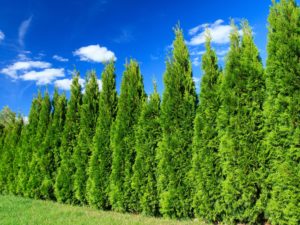
The most important message that you can get from this article is DO NOT plant too many of ANY species in a hedgerow and ALWAYS know the ideal growing conditions of a tree before choosing it.
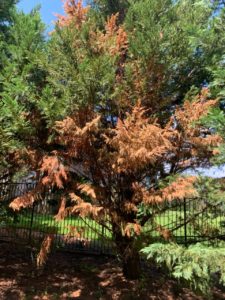
This fungal pathogen enters a tree through a wound in the bark. Pruning cuts, wind or ice breakage, insect feeding, mower or string trimmer damage, freeze damage or anything that causes an open wound may allow the fungal spores to enter the tree. The disease overwinters in cankers on diseased bark. Fungal spores, identified by small black dots appearing on the cankers in spring, are spread by splashing water from rain or irrigation, or by pruning tools to other parts of the infected tree or to other trees. The fungal pathogen infects the inner bark, causing canker lesions that lead to dead branches. Lesions are slightly sunken areas of bark on twigs and branches that may be colored dark brown or purple.
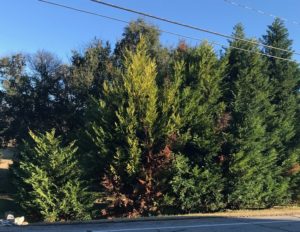
Yellowing of foliage followed by random dead branches called “flags” throughout the tree are caused by the sunken, dead lesions on the stems and trunk which affect cambial tissue. The central leader may also be affected, causing the top of the tree to die. Resinous exudates may leak out of the cracks on the nearby infected tissue, causing resin flows on the bark. Similar symptoms occur on Italian Cypress and Arizona Cypress.
Since there is currently no treatment for this disease, proper cultural practices will help prevent its occurrence. Trees that are stressed are more susceptible to disease. Learning the ideal conditions for the growth of a species prior to planting will help mitigate the occurrence of this disease.
Here are some guidelines to keeping your Cypress trees healthy:
*Leyland, Italian and Arizona Cypress MUST have good internal drainage and surface drainage. Perform a drainage test before planting, plant high or on raised beds if necessary, and avoid low spots where seasonal rain causes saturation. Be aware of roof runoff and do not allow it to affect these trees.
*Plant these species in the proper soil type. Clay soils are NOT appropriate for these trees.
*Do NOT allow mulch to touch the trunk of these trees and do NOT plant the tree any deeper than it was in the nursery pot. Dig the hole the exact depth as the root ball, or plant an inch or so higher than the surrounding ground in case of settling.
*Full sun is recommended for these species. These are not shade-tolerant trees.
*Space the trees for their full size, with enough space for good air circulation between them.
* Do not plant a “hedgerow” of these trees. If disease starts in one tree, it WILL spread to the others. Limit numbers to 3 or 5, or use other species in groupings between to avoid a continuous line. This not only limits losses, but treats the screening area as a “landscape”.
*Use drip irrigation and avoid overspray from lawn sprinklers. We cannot control the rain, but we CAN control sprinklers!
*Avoid drought stress by paying attention to summer heat and wind and deep watering at the appropriate time. Yes, these trees are “drought tolerant”, but infrequent, deep watering can mean the difference between “thriving” and “surviving! Water the ground out a good distance from the trunk, as the roots extend at least as far out from the trunk as the height of the tree.
*Do not use “weed and feed” products on the lawn. As previously mentioned, roots extend at least as far out from the tree as the height of the tree, and herbicide applied to the lawn around the tree will weaken the tree’s roots.
*Clean pruning tools between cuts with a 10% bleach solution or 70% alcohol.
*Prune dead and dying branches and destroy clippings. Try to remove the area with the canker and 6″-12″ beyond. Remove entire tree if heavily infected to avoid transmission to surrounding trees. Avoid pruning before, during or after rain.
And I reiterate, CHOOSE THE TREE FOR THE SPOT, NOT A SPOT FOR THE TREE! Do your research and know your conditions. Trees are an investment and are living organisms, and are best treated as such.

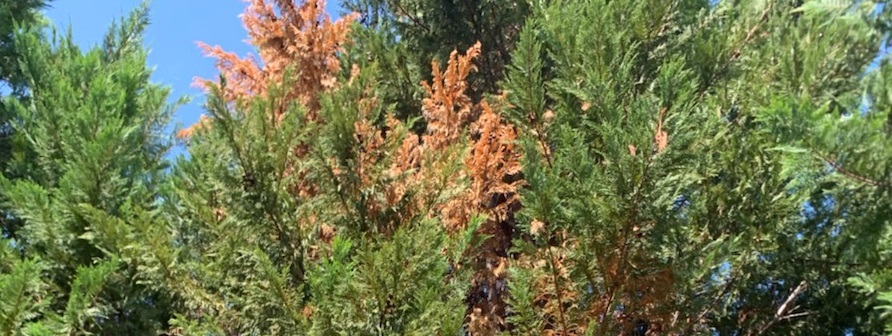
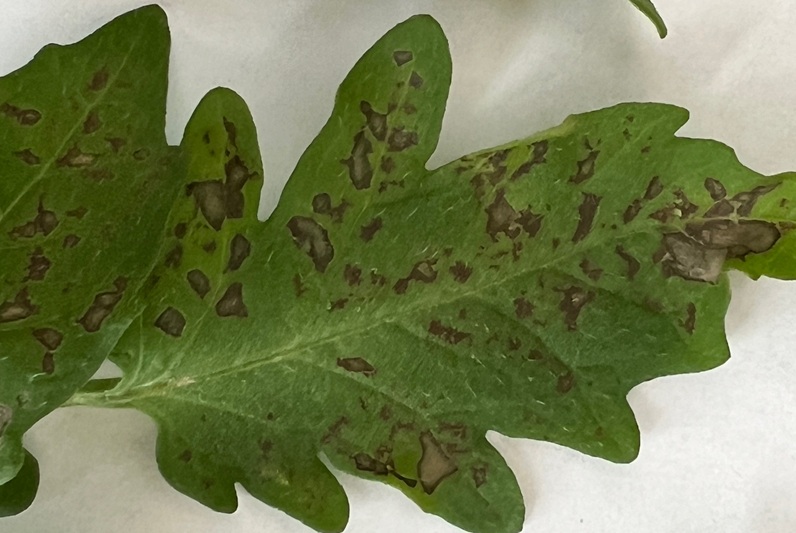
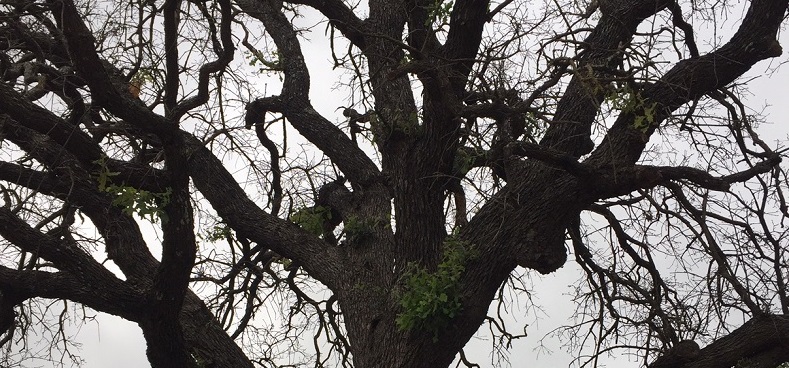

Leave A Comment